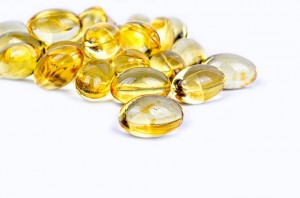
by Selina Shah, MD, FACP
Our bones are important because they serve as the foundation on which we are built. Bone is living tissue that contains blood vessels; proteins, including collagen; and cells that are actively maintaining healthy bone. Bone also contains many minerals, the most important of which is calcium.
Building Strong Bones
We have the best chance of building our strongest bones when we are young — because the rate at which we form bone is higher than that of losing bone up until about the age of 30, when peak bone mass is reached. After peak bone mass is reached, we starting losing bone at a higher rate than we form it. The majority of the mass of our bones forms between the ages of 11 – 14 in girls and 13 – 17 in boys. The more bone mass you have by the time you reach peak bone mass, the less of a chance of you have of breaking your bones, especially later in life as bone loss occurs.
Bone Health And Your Diet
 As dancers, we place a lot of stress on our bones. This stress can lead to damage of bone tissue. However, luckily our body is designed to repair itself, so bones maintain their healthy structure by containing cells that remove damaged bone and replace it with healthy bone, also known as bone turnover.
As dancers, we place a lot of stress on our bones. This stress can lead to damage of bone tissue. However, luckily our body is designed to repair itself, so bones maintain their healthy structure by containing cells that remove damaged bone and replace it with healthy bone, also known as bone turnover.
In order to achieve the highest bone mass possible and to ensure healthy bone turnover, it is important for our bones to have the right ingredients. Dancers need have enough nutritional intake based on activity level, adequate calcium, and adequate Vitamin D. Without these, a decrease in bone density can occur, making a dancer susceptible to fractures and stress fractures.
Dance is a form of exercise which uses energy. This energy needs to be replaced by consuming enough healthy carbohydrates and fats so that your body can continue to function normally. Having adequate fuel is especially important for girls to ensure normal, regular menstruation. The hormones that regulate menstruation directly affect bone mass. If a dancer does not consume enough calories and fats to adequately re-fuel the body, then the hormone balance gets thrown off – which can result in a decrease in bone density.
It is not unusual to experience irregular periods (meaning periods that do not come monthly) during the first year of menstruation. However, missing your periods for months at a time or getting your period too late, may also be a sign that you are not consuming enough calories. Genetics and other medical issues could also be playing a role in abnormal menstrual cycles or later onset of menstruation. It is best to consult a physician if you do miss your period for more than 2 months, especially if this occurs on a regular basis, or if you are 15 years old and have not gotten your period. Males are also susceptible to bone loss due to inadequate energy consumption. All dancers need to consume enough calories to re-fuel the body.
Bone Density
 The human body is designed to always have normal calcium levels – so if you do not consume enough calcium, it will take it from bone which again will lead to decreased bone density. The Institute of Medicine currently recommends consuming the amount of calcium based on age shown in Table 1 below. It is best not to exceed the amount of calcium shown at the upper limit column because this can increase the risk of forming kidney stones. It is best to get calcium from dietary sources such as dairy, almonds, broccoli, Brussels sprouts, and dark leafy greens, to name a few. Check your food labels and calculate how much calcium you get in a day. If you do not reach the level recommended in Table 1, then buy a supplement. Do not take more than 500mg at a time to maximize effective absorption.
The human body is designed to always have normal calcium levels – so if you do not consume enough calcium, it will take it from bone which again will lead to decreased bone density. The Institute of Medicine currently recommends consuming the amount of calcium based on age shown in Table 1 below. It is best not to exceed the amount of calcium shown at the upper limit column because this can increase the risk of forming kidney stones. It is best to get calcium from dietary sources such as dairy, almonds, broccoli, Brussels sprouts, and dark leafy greens, to name a few. Check your food labels and calculate how much calcium you get in a day. If you do not reach the level recommended in Table 1, then buy a supplement. Do not take more than 500mg at a time to maximize effective absorption.
Table 1: Institute of Medicine Daily Adequate Intake of Calcium
| Age | Calcium (mg/day) | Calcium (mg/day) Upper Level Intake |
| 4 – 8 | 1000 | 2500 |
| 9 – 18 | 1300 | 3000 |
| 19 – 50 | 1000 | 2500 |
| 51 – 70 | 1200 | 2000 |
| > 70 | 1200 | 2000 |
| Osteoporosis | 1500 | 2500 |
Bone Health And Vitamin D
 In order for your body to absorb dietary calcium, you need to have an adequate amount of Vitamin D. The best source for Vitamin D is from the sun. Vitamin D is formed by cells in the skin layer. Sun exposure to form Vitamin D in the skin is inhibited by sunblock and decreased by clouds and pollution. Additionally, the darker the skin color, the longer daily exposure time to sun is needed for the cells in your skin layers to form adequate vitamin D. Generally speaking safe sun exposure (no sunblock for the time allotted as long as there is no risk of skin cancer by family or personal history of skin cancer) is best obtained between the hours of 10am – 3pm on the arms and legs for a minimum of 20 minutes per day depending on skin color and the latitude in which you live.
In order for your body to absorb dietary calcium, you need to have an adequate amount of Vitamin D. The best source for Vitamin D is from the sun. Vitamin D is formed by cells in the skin layer. Sun exposure to form Vitamin D in the skin is inhibited by sunblock and decreased by clouds and pollution. Additionally, the darker the skin color, the longer daily exposure time to sun is needed for the cells in your skin layers to form adequate vitamin D. Generally speaking safe sun exposure (no sunblock for the time allotted as long as there is no risk of skin cancer by family or personal history of skin cancer) is best obtained between the hours of 10am – 3pm on the arms and legs for a minimum of 20 minutes per day depending on skin color and the latitude in which you live.
The further you are from the equator, the less Vitamin D is formed during winter months. It is difficult to adequately consume Vitamin D from foods fortified with Vitamin D. A few foods such as Cod Liver Oil, egg yolks, salmon, sardines, mackerel, and canned Tuna are natural sources of Vitamin D. One study found that more than 95% of dancers are deficient in Vitamin D. If you cannot get enough sun exposure, the Institute of Medicine recommends the supplementing Vitamin D at the levels based on age shown in Table 2 below. Your doctor may check a blood level and recommend a higher dosage of Vitamin D to boost your levels quickly. It is difficult to become toxic with Vitamin D supplementation. Follow your doctor’s advice.
Table 2: 2010 Institute of Medicine Daily Adequate Intake of Vitamin D
| Age | Vitamin D (IU) |
| 0 – 1 | 600 |
| 1 – 70 | 600 |
| > 70 | 800 |
| Pregnancy | 600 |
In summary, it is best to ensure adequate Vitamin D levels, calcium intake, and food intake to develop and maintain strong bones. The younger you begin, the better off you will be in the future.

Selina Shah, MD, FACP is a board certified sports medicine and internal medicine physician and the Director of Dance Medicine at the Center for Sports Medicine in San Francisco, CA and Walnut Creek, CA. She has lectured nationally and internationally on various dance medicine topics and has published papers in medical journals and books including her original research on dance injuries in contemporary professional dancers. She is the dance company physician for the San Francisco Ballet School, Liss Fain Dance Company and Diablo Ballet. She is a physician for Berkeley Repertory Theater, Mill’s College, St. Mary’s College, and Northgate High School. She takes care of the performers for Cirque du Soleil and various Broadway productions when they come to the San Francisco Bay Area. She has taken care of several Broadway performers (i.e. American Idiot, South Pacific, Lion King, Book of Mormon, MoTown, and Billy Elliot). She is a team physician for USA Synchronized Swimming, USA Weightlifting, USA Figure Skating and travels with the athletes internationally and nationally. She is also a member of the USA Gymnastics Referral Network. As a former professional Bollywood and salsa dancer,
Dr. Shah is passionate about caring for dancers. She continues taking ballet classes weekly and also enjoys running, yoga, Pilates, weightlifting, and plyometric exercise.



















